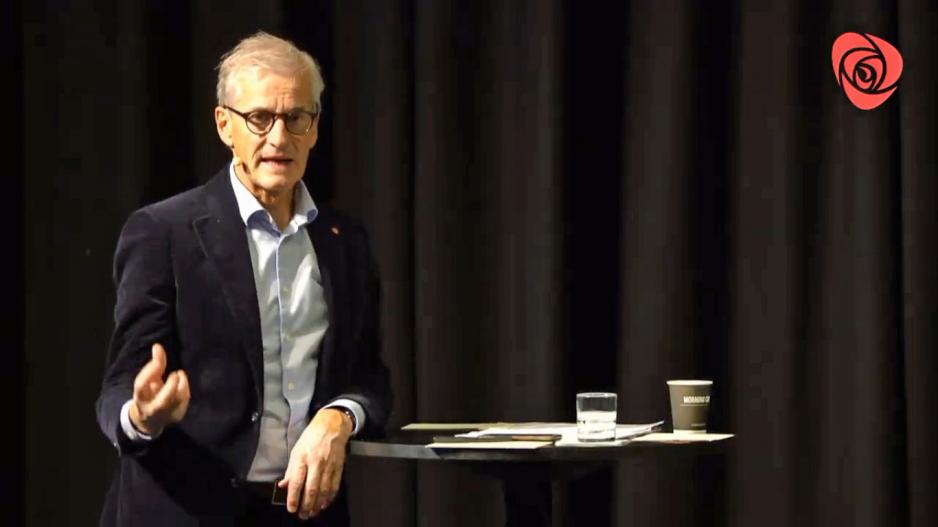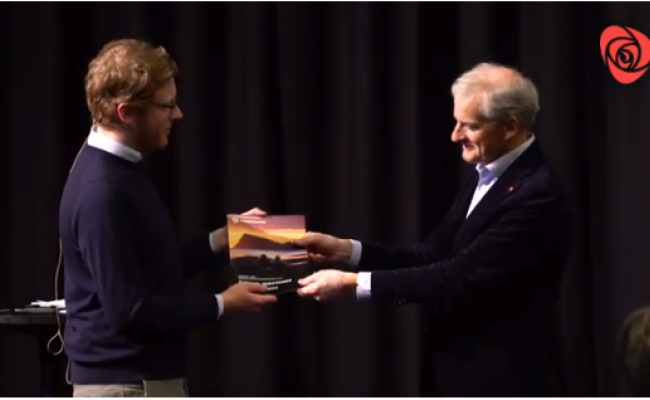If We are to Believe the Labor Party Leader, This is When the High North is to Boom - Again

Labor Party leader Jonas Gahr Støre keeps the promise he gave on last election night; a new High North initiative from the Labor Party.
Commentary: The one who waits for something good does not wait in vain, the saying goes. The Norwegian Labor Party has just presented its new Arctic policy draft. And if we are to believe party leader Jonas Gahr Støre, this is when the High North is to boom, to the benefit of both the nation as well as the international community.
Yet the missed opportunities nevertheless play the main role in shaping policies.
That goes to show that not much has worked during the 15 years since the High North in 2005 became a civilian political project.
Still a region of opportunities
We are still the region of “opportunities”, according to the headline of the Labor Party’s High North seminar in Tromsø Tuesday afternoon. For a few hours, Labor Party leader Jonas Gahr Støre toured representatives for politics, academia and business before Labor MP Martin Henriksen, who has chaired the party’s High North Policy Committee, presented us with the Committee’s visions for the next decade in the High North.
Neither Støre, Henriksen nor the Committee disappoint us. Their proposals are both committing and rich with content, in addition to the fact that the main challenges facing people in the High North are addressed in a good way.
The [Norwegian] Labor Party adjusts its own High North policy
The Labor Party is in many ways adjusting its own rhetorical efforts from the High North politics of the past few years. After being almost obsessed with the ocean, the focus is once again on people – and as we all know, they live on land. The focus on the ocean has overshadowed the fact that most of the resources located in the High North fill the pockets and bank accounts further south.
This adjustment is both good and necessary.
People live on land
It has been a kind of political-scientific excuse for not having to highlight economic and political differences between the north and the south. An opportunity to drown the debate about the fact that the value of resources and knowledge in the High North has been consistently moved out of the region as a result of political decisions.
When the Labor Party now appears to reverse its own policies and at the same time attacks the Norwegian government’s Arctic policy, the party has many and varied solution proposals ranging from relocation of state offices and strengthening education to transferring more power to Northern Norway and North Norwegian institutions.
The backdrop is one of negative population growth reducing the creation of wealth and threatening security policy stability in the High North.
The ambitions are the same as before
Some of the proposals are new, some are old acquaintances.
The same ambitions
The ambitions, however, are so similar those presented 15 years ago that it is almost scary.
The challenges, nevertheless, are greater than what they were then. Because for some years after 2005, we saw population growth. And the Arctic has gone from being predictably peaceful co-existence to becoming an arena for big power rivalry.
Through its observations as well as solution proposals, the Labor Party committee consciously or unconsciously describes a national High North policy that for the past 15 years has barely left any marks. If the total sum of policies launched on behalf of the North for the past few years had become reality, the challenges would have been fewer and the ambitions different from what they were 15 years ago.
The fact that the region exports its surpluses into national or international companies is not a new discovery, it is old news. As is the fact that a decreasing amount of surplus accumulated in the Arctic is reinvested into North Norwegian businesses, and the fact that ripple effects are absent.
Also read
Security, international cooperation, national economics and welfare
After a miserable election result in Northern Norway last time, the Labor Party now tries to rise to the occasion. Party leader Jonas Gahr Støre gavet hat promise in the very moment he acknowledged election defeat.
Defining for Norway
However, party committees do not govern Norway. The next step of this process is for the Labor Party’s national convention to approve the transferal of power and capital from the south to the north. It is quite likely that that will happen. Jonas Gahr Støre will put a lot of effort into having the big lines of the draft policy included in the party program.
Eventually, however, the Ministry of Finance and Parliament will decide these questions.
An important effect of the Labor Party – the main opposition party – presenting its visions for the High North is that it simultaneously challenges the government, which is to present a whitepaper on the very same subject in just a couple of months.
We have not managed to create a necessary understanding of the fact that an active and radical Arctic policy is a national concern, not a regional issue.
By November we will also know what the government wants with the High North. Perhaps this, in sum, will lead to greater national engagement with the main issues:
Security, international cooperation, national economy and welfare.
Because that is what High North politics are really about.
This commentary was originally published in Norwegian and has been translated by HNN's Elisabeth Bergquist.


